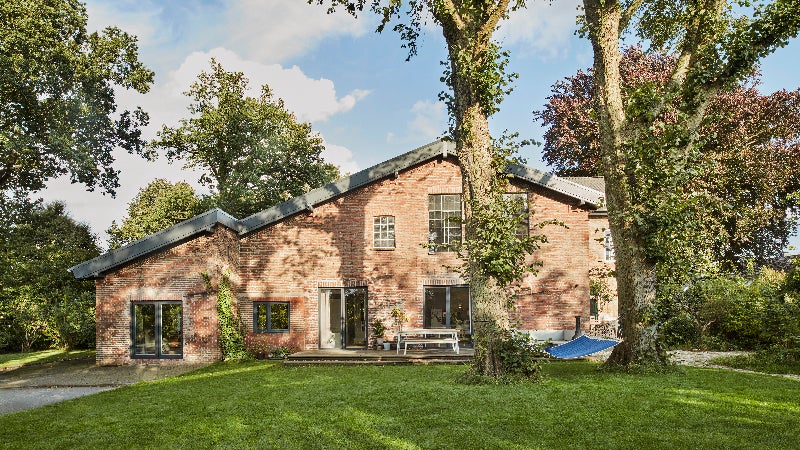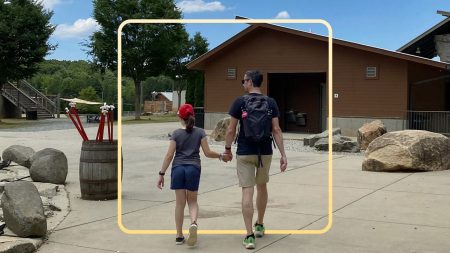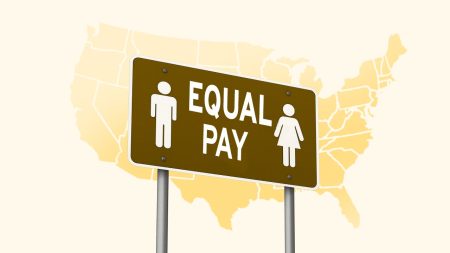Key takeaways
- A dwelling insurance policy is meant for non-owner-occupied buildings, unlike the similarly named dwelling coverage found in a standard homeowners policy.
- Some non-owner-occupied buildings include rental properties, vacation homes and real estate investments.
- There are three types of dwelling insurance policies — DP-1, DP-2 and DP-3 — each with varying levels of coverage for the building and personal property.
As you review your home insurance policy, you’ll likely notice a section labeled Coverage A or dwelling coverage. This part of your policy protects the physical structure of your home — essentially everything from the roof to the foundation. However, as nuanced as this may sound, dwelling coverage and dwelling insurance are different products. Homeowners insurance dwelling coverage is designed for the place you live in full-time. Dwelling insurance, or dwelling fire insurance, on the other hand, is a separate type of policy meant for properties you don’t personally occupy, like rentals, investment properties or vacant structures. We break down the different levels of coverage available to your non-owner-occupied buildings and what protections a dwelling insurance policy can provide.
What is a dwelling policy in insurance?
A dwelling policy is a type of property insurance designed for people who own a building but don’t live in it full-time. If you live in your home year-round, a standard home insurance policy will probably meet most of your coverage needs. However, buildings that are unoccupied for long stretches of time and buildings used as investment properties usually have different coverage needs. That’s where dwelling fire policies come in.
Dwelling fire policies are designed to insure buildings that may not qualify for coverage under a home insurance policy. Property that’s left unattended for long periods of time presents different risks compared to a primary residence, and dwelling fire policies are written to insure against those risks.
What’s the difference between a dwelling fire policy and a homeowners policy?
Dwelling fire policies and home insurance policies differ in cost and coverage. With dwelling fire policies, theft and liability coverage are not automatically included, but they can be purchased as add-ons. Most home insurance policies come with these coverage types pre-included. Because dwelling fire policies cover less than home policies, premiums are usually cheaper.
What do dwelling policies cover?
What is covered in a dwelling policy depends on the type you choose: DP-1, DP-2, or DP-3. These types of dwelling insurance are structured similarly to home insurance policies, offering varying levels of protection to your property in the event of damage from unexpected events (called “perils” in the insurance industry). Here’s a closer look at the different core coverage types included in a dwelling fire insurance policy.
- Dwelling (Coverage A)
-
Replaces or repairs the building’s physical structure, like its walls, floors, foundation and roof, and other attached structures
- Other structures (Coverage B)
-
Replaces or repairs detached structures on the property, like a gazebo or shed
- Personal property (Coverage C)
-
Coverage for the insured’s personal belongings
- Fair rental value (Coverage D)
-
If the property is rented out and a covered loss makes the property uninhabitable, this helps pay for lost rental income
- Additional living expenses (Coverage E)*
-
If the property is owner-occupied and a covered loss makes it unsafe to live in, this helps pay for the owner’s hotel, restaurant and other related bills
*Not automatically included in DP-1 policies
Who needs dwelling insurance?
Dwelling insurance is commonly used for:
- Vacation homes
- Hunting cabins
- Investment property
- Homes under construction
- Landlords with four or fewer tenants
What is DP-1 insurance?
DP-1 offers the least coverage of the three dwelling insurance policies. Unlike the other types, additional living expenses coverage is not automatically included. When you file a claim, it’s usually paid out on an actual cash value (ACV) basis. This means that depreciation is factored into your claim, so any potential payout will likely be lower. This, and the smaller scope of coverage, usually make DP-1s the most affordable dwelling policy.
What is DP-2 insurance?
DP-2 covers the dwelling, other structures and personal property for different perils listed in the policy. It covers more types of losses than a DP-1 but not as many as the DP-3. Claims filed on a DP-2 policy are paid out on an actual cash value basis, as opposed to replacement cost value (RCV). In terms of cost, the DP-2 is usually more expensive than a DP-1 but cheaper than a DP-3.
What is DP-3 insurance?
Of the three different types of dwelling insurance, DP-3 covers the most. Personal property is covered for losses from perils specifically named in your policy. The dwelling and other structures are covered on an open-peril basis, which means you’re covered unless a peril is specifically excluded per your policy. Like a DP-2, the dwelling and other structures are insured at replacement cost value. Personal property is insured at actual cash value. Because this dwelling policy type offers the broadest coverage, DP-3 premiums usually cost more than DP-1 and DP-2.
DP-1 vs. DP-2 vs. DP-3
| Peril | DP-1 | DP-2 | DP-3* |
|---|---|---|---|
| Fire | ✔ | ✔ | ✔ |
| Lightning | ✔ | ✔ | ✔ |
| Explosion | ✔ | ✔ | ✔ |
| Riot | ✔ | ✔ | ✔ |
| Volcanic eruption | ✔ | ✔ | ✔ |
| Damage from vehicles | ✔ | ✔ | ✔ |
| Damage from aircraft | ✔ | ✔ | ✔ |
| Vandalism | ✔ | ✔ | ✔ |
| Burglary damage | ✔ | ✔ | |
| Weight of ice, snow or sleet | ✔ | ✔ | |
| Falling objects | ✔ | ✔ | |
| Freezing | ✔ | ✔ | |
| Sudden and accidental water damage | ✔ | ✔ | |
| Electric current | ✔ | ✔ | |
| Fireplace smoke | ✔ | ✔ |
*Personal property losses only. Dwelling and other structures covered on an open-peril basis.
What do dwelling fire policies not cover?
Two major things are not covered by dwelling fire policies: theft and liability. If you want these two things covered, you’ll need to purchase policy add-ons, called endorsements. Vandalism is a covered policy peril; however, it may not apply if the building has been vacant for more than 60 consecutive days. In insurance lingo, “vacant” and “unoccupied” mean two different things. An unoccupied building still has furniture in it, while a vacant property has neither furniture nor anyone living in it.
Other dwelling fire policy exclusions are similar to what you’d see on a home insurance policy. These include:
- Floods
- Earthquakes
- War
- Nuclear hazards
- Government seizure
- Neglect
- Intentional losses
Frequently asked questions
Read the full article here









